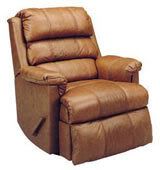LOL.
I'll be holding out for "Cash for Barcaloungers". It's coming, I just know it. We just have to whine enough to our Congress critters.

Posted on 08/24/2009 7:35:21 AM PDT by wk4bush2004
A $300 million cash-for-clunkers-type federal program to boost sales of energy-efficient home appliances provides a glimmer of hope for beleaguered makers of washing machines and dishwashers, but it's probably not enough to lift companies such as Whirlpool (NYSE:WHR - News) and Electrolux out of the worst down cycle in the sector's history.
Beginning late this fall, the program authorizes rebates of $50 to $200 for purchases of high-efficiency household appliances. The money is part of the broader economic stimulus bill passed earlier this year. Program details will vary by state, and the Energy Dept. has set a deadline of Oct. 15 for states to file formal applications. The Energy Dept. expects the bulk of the $300 million to be awarded by the end of November. (Unlike the clunkers auto program, consumers won't have to trade in their old appliances.)
(Excerpt) Read more at news.yahoo.com ...
We just completed one year with a new frig (old was dated 1985) - you would not believe the reduction in our electric bill for ONE appliance! I never expected anything more than a lower electric bill - certainly no cash!
GE’s Immelt knows it’s good to have low friends in high places....
If the old frig came with a house you bought you wouldn't have a receipt either or proof it came with the house. I dont see how they could possible implement this like they did the clunker program.
And we bailed out Chrysler so they could be sold to a foreign auto company Fiat.
What is going on?
Why are taxpayer dollars being used to force the sale of American companies to foreign businesses? And why isn't anyone up in arms about it?
They’re not doing this for the people... so what has GE offered to do for ‘bama?
My fridge died this weekend...gotta go buy one.
Any tips?
What is going on with Spain? why are they buying up our banks and trying to force us to build super highways so they can make money off us? And why is our government seem to be helping them?
This is the first I've heard of it, but nothing surprises me much anymore.

There are only about four manufactures of Fridges anymore, not including the really expensive brands like Viking.
GE, Amana/Maytag/Whirpool, Bosch and LG. I believe all the rest are made by one of these three.
My french door that I bought a year ago says Amana on the outside and Maytag on the inside. I think it was actually assembled in Iowa. The GE’s we looked at said made in Mexico. The LG are made in Korea. Bosch are Germany.
Also, my Kitchenaid dishwasher is made by Whirpool. The dealer told me almost all the dishwashers are made by Whirpool except Bosch.
I want a Sub-Zero, does it qualify?????/Just Asking - seoul62.......
Yes, in Korea.

We had the same experience going from a 12 year old Kenmore side by side to a new Amana French door.
Our electric bill dropped about $25/month. I could not beleive that the old fridge was that inefficient.
I love my Amana/Maytag french door model.
We did not get an icemaker through the door. The ice maker is in the bottom so you open up the drawer to get at it.
It was around $1500 in Black/White 25 cu ft.
This $300M may be a new increment of funding, but programs exactly like it have been around since the late 1980's/early 1990s. The justification is that adding a MW of new capacity in terms of generation is very expensive - and encouraging a MW of discretionary demand (things like dishwashing which can be time shifted) to move off peak saves the cost (to rate payers) of building that extra MW of capacity. Thus you have seen all sorts of things like rebates on fluorescent lighting to rebates on "EnergyStar" products of all types.
The real questions is does the effectiveness hypothesized when these programs are proposed and authorized ever come into being? Your local public service regulatory body must approve the incentives and the method for recovering the cost of the subsidy, or, in some cases the Congress must, in theory, evaluate the benefits of the program before authorizing the expenditure of its cost. But in terms of actual behavior it is often found that there is a snapback phenomenon - in which increased use diminishes the assumed savings from the more efficient device/appliance/lightning fixture. People think, I now have a more efficient appliance/device, therefore I can use it 2x as much as the old one. That behavior phenomenon's pretty well documented.
I like to think of my own experience in the mid 1990's while living in Madison Wisconsin. The local utility had a rebate program on high efficiency fluorescents an the rebate program expired on 12/31 of that year. A local retailer had a boatload of inventory as the year ended and offered a 100% rebate, on top of which the utility would pay you some amount (say $5 per bulb). I didn't need any, but since they were free at retail and earned a rebate, I picked up 4 of them. Trying them out in the house I realized that the color temperature of the light they generated was unpleasant. So I installed one in the basement where color temperature wasn't so important, because one was seldom down there. Thus the assumption of the planner was immediately violated. Somewhere in some file at the Public Service Commission is an application to offer this DSM program and there was an assumption that the new technology would replace an old technology (like an incandescent lamp in a living room burning x hours per day) and that was completely violated. So, the impact of these programs in practice is very questionable. But, big point - this is nothing new.
This is great info, woodbutcher1963-thank you very much!

CASH FOR CASKETS
I see you get my point.
That’s a good one! I cannot believe they are doing this next.
Disclaimer: Opinions posted on Free Republic are those of the individual posters and do not necessarily represent the opinion of Free Republic or its management. All materials posted herein are protected by copyright law and the exemption for fair use of copyrighted works.